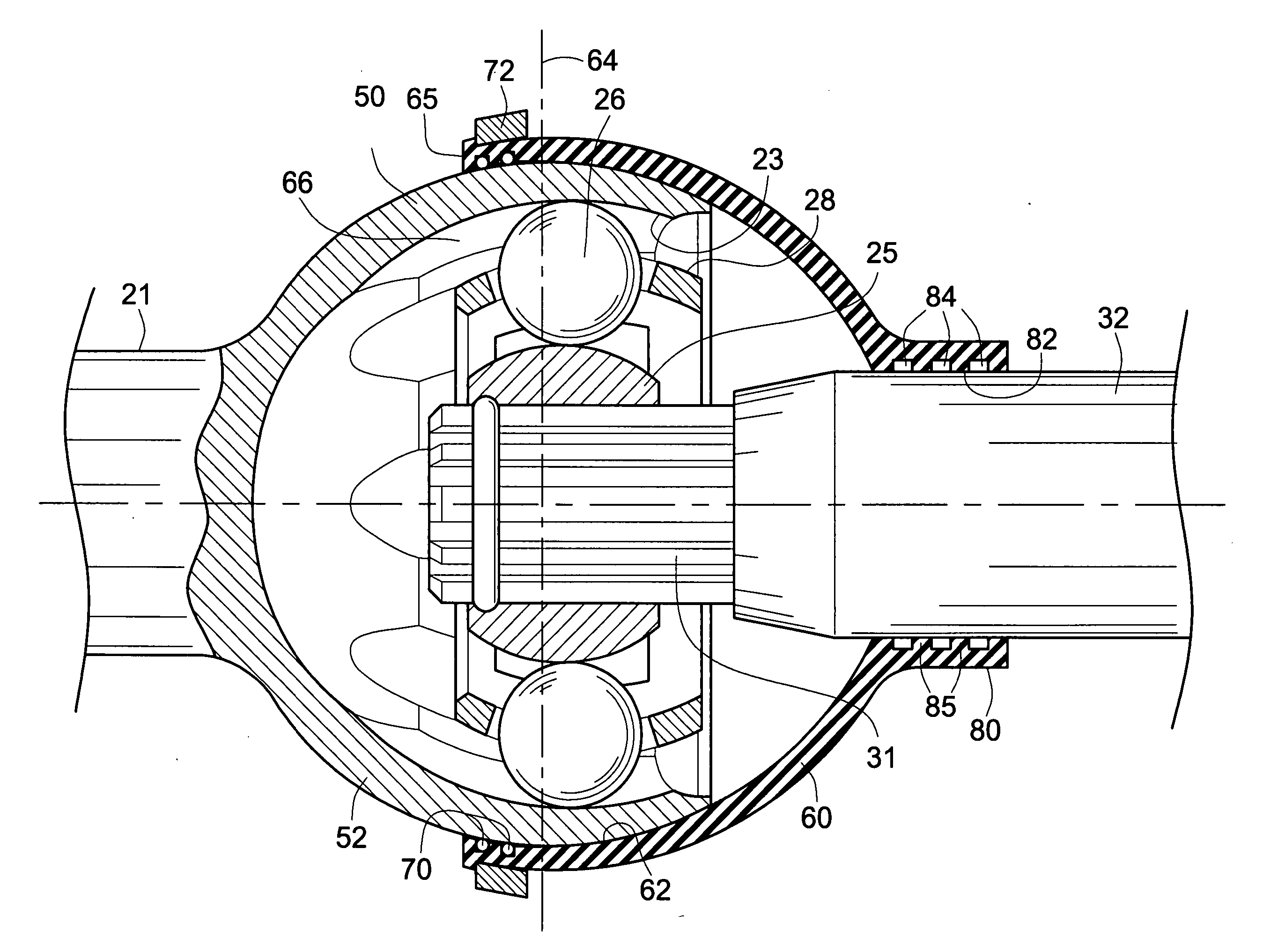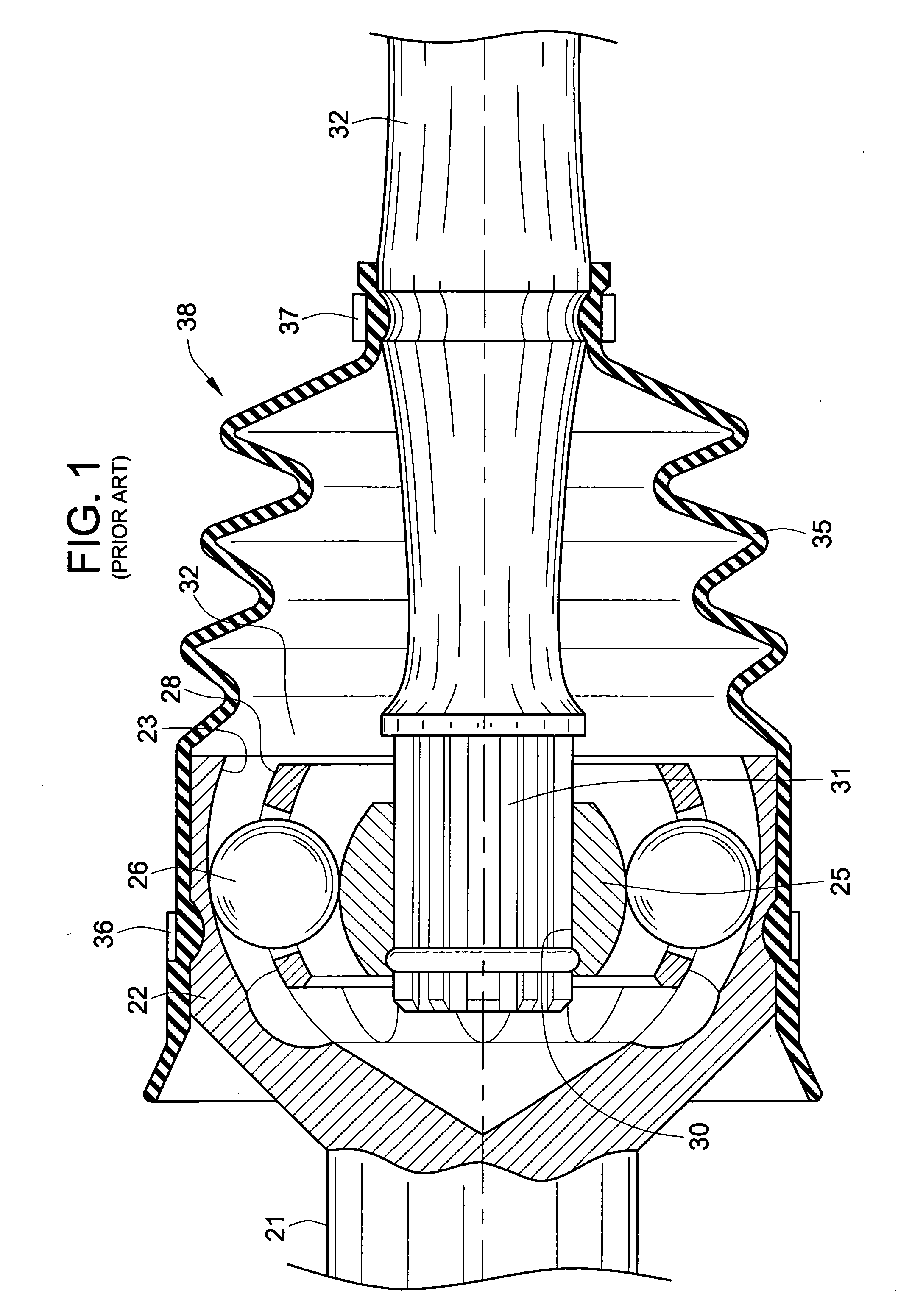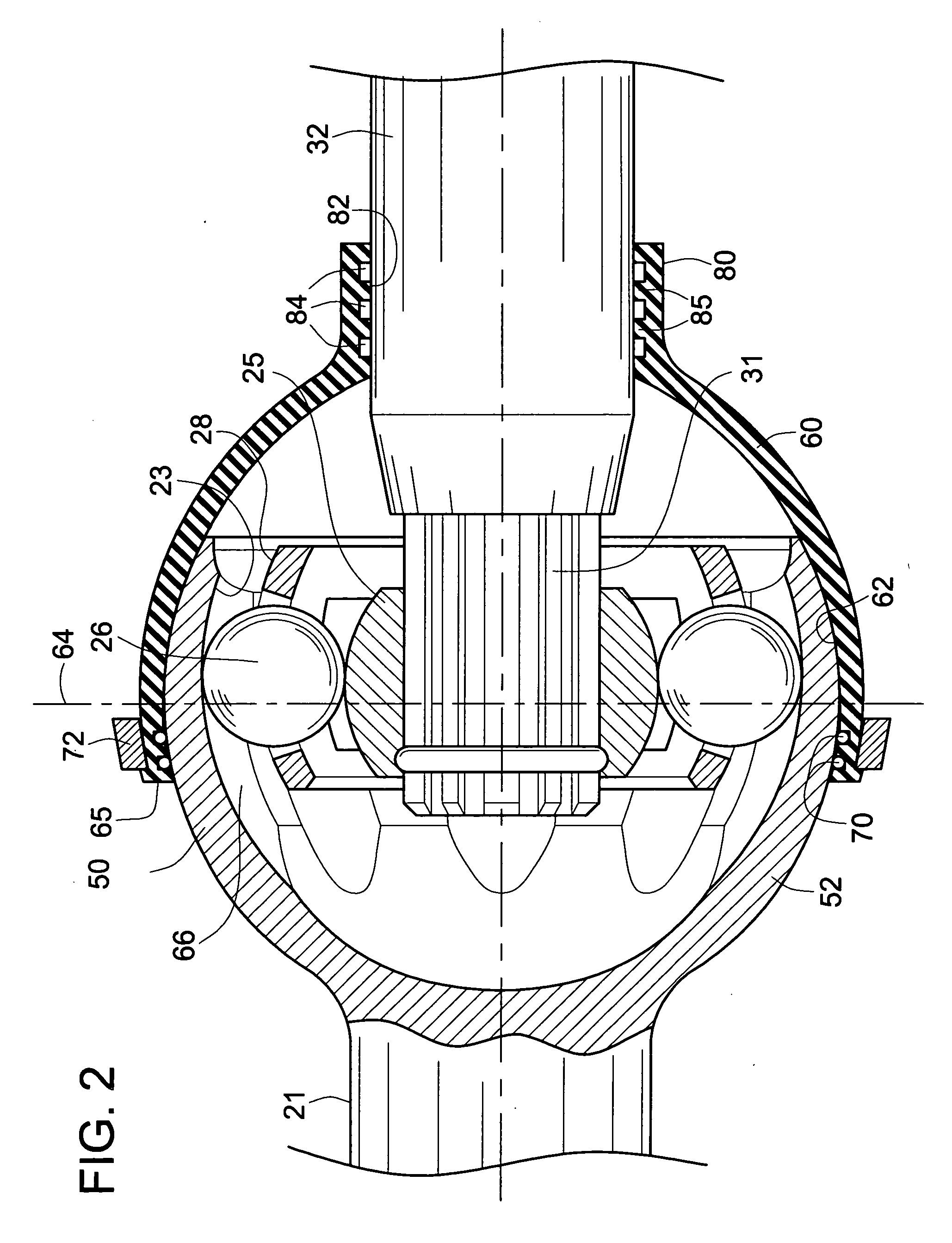High performance constant velocity universal joint
a constant velocity, universal joint technology, applied in the direction of yielding couplings, shafts and bearings, rotary machine parts, etc., can solve the problems of joint failure, less desirable, rotational velocity oscillation of a conventional cardan joint, etc., and achieve the effect of reliable primary seal
- Summary
- Abstract
- Description
- Claims
- Application Information
AI Technical Summary
Benefits of technology
Problems solved by technology
Method used
Image
Examples
Embodiment Construction
[0017] Turning now to the drawings, and particularly to FIG. 2, there is shown the components of a constant velocity joint used in practicing the present invention. Like FIG. 1, an input shaft 21 is coupled to an output shaft 32 by means of the constant velocity joint.
[0018] In the FIG. 2 embodiment an outer housing or body 50 of particular configuration encloses the remaining conventional elements of the constant velocity joint. The body has races 23, and the joint also includes an inner race 25, also having races, drive balls 26 and a cage 28. The inner race 25 has a splined opening to receive the splined end 31 of the output shaft 32. Thus, the shaft 32 can flex at any angle with respect to the input shaft 21. The maximum angle which can be accommodated without interference is on the order of 40 degrees.
[0019] The outer surface 52 of the body 50 is formed as a smooth spherical surface for purposes now to be described. In practicing the invention a semi-rigid plastic boot 60 is ...
PUM
 Login to View More
Login to View More Abstract
Description
Claims
Application Information
 Login to View More
Login to View More - R&D
- Intellectual Property
- Life Sciences
- Materials
- Tech Scout
- Unparalleled Data Quality
- Higher Quality Content
- 60% Fewer Hallucinations
Browse by: Latest US Patents, China's latest patents, Technical Efficacy Thesaurus, Application Domain, Technology Topic, Popular Technical Reports.
© 2025 PatSnap. All rights reserved.Legal|Privacy policy|Modern Slavery Act Transparency Statement|Sitemap|About US| Contact US: help@patsnap.com



